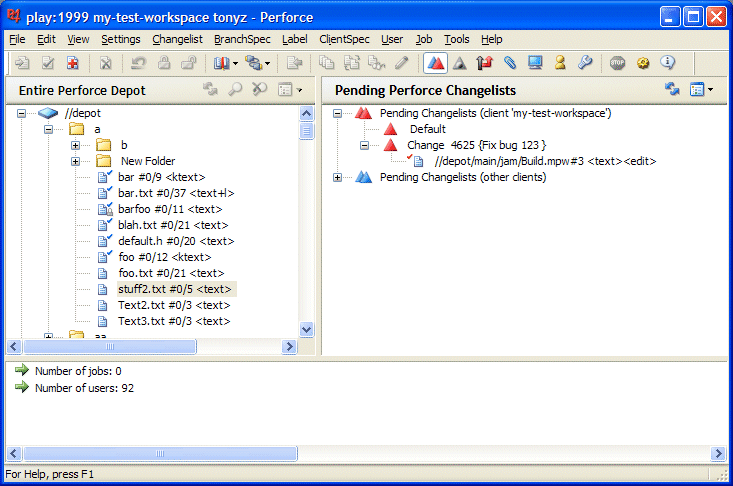Shipping Features Responsibly
Slides from GDC 2019 Tools Tutorial Day
Here is the PDF of my deck from the talk!
Agenda
“With great power comes great responsibility” -Voltaire / Spider-Man / Stan Lee
- This talk gives high level best practices of releasing new features
- All features don’t necessarily need to follow all guidelines
- Any feature needs some combination of these
Me
- Gamedev Tools Engineer since 2003
- Infinity Ward, Kojima Productions, Insomniac
- Leading a tools team at IW
- We are hiring, and having a party tonight!
- tinyurl.com/toolshappyhour2019 for details
- History in revision control, branching, file formats
- Built asset editors, level editors, tools frameworks
^ But this talk isn’t really about me it’s mostly about…
My Evil Twin
- Extensive experience in breaking artists & designers
- I’ve halted entire studios’ progress for hours
- I’ve degraded artists’ productivity for days
- I’ve released tools that are:
- undertested (buggy)
- underdesigned (don’t work in practice)
- overdesigned (confusing/too many features)
^ No details b/c of Vault, talk to me later tonight
^ All this qualifies me to lecture you about how to not be like me, and waste people’s time

^ You may or may not have consciously chosen to be here
^ You have written some code, decided things should be different
^ Or maybe you are following up on a feature request opened by a user

^ Stop right there, buddy.
^ You almost definitely aren’t ready to pull the trigger.
^ I’m here to tell you all the things you need to do (to not be like me).
1 - Question Your Design
- Have you actually done all the design work to ship this feature?
- Remember: impact usually surpasses intent
- Take a step back and make intent crystal clear
- What problem are you trying to solve?
- Is this something that only bothers (or makes sense to) you?
- Imagine giving an “elevator pitch” of explaining this design
- Do you sound like a crazy person?
- Is this a waste of time/effort?
^ Try your best to talk yourself out of making the change
^ It’s perfectly ok to start a lot of changes and walk away!
^ When in doubt: put it on ice and move on to the next thing
2 - Estimate The Impact
- Have you considered how it will impact:
- Every workflow permutation (use case)?
- How do you know? Have you searched the code (GREP)?
- How will offsite staff and outsource vendors work?
- Downstream projects (teams offset in time)?
- Fellow engineers (different from users)?
^ A good time to do some “Rubber Duck Debugging”-style explainer of the change
^ A preliminary code review to help make the impact knowable
^ Just looking to understand the scope of your change
3 - Perform And Document Your Testing
-
The bigger the impact, the more testing you need
- Be greedy with automated tests
- No cheating: actually wait for them to finish!
- Critical code paths should be stepped through in the debugger
- Don’t end up saying “How did this ever work?”
- Document testing you have done in change comment
- Adds value to the code review process
^ Remind code reviewers that your code works by stating tests
^ They aren’t strictly looking for bugs, evaluating your approach
^ If tests are documented reviewers may think of tests you are missing
4 - Measure And Document Your Performance
-
Is it faster? Is it slower? By how much?
-
What is the bottleneck? Did you change it?
- Have you measured the impact on resources?
- CPU: are you wasting CPU cycles needlessly?
- Memory: what about going wider on many-core CPUs?
- Disk Space
- Have you considered how disk caches will be evicted?
- How will you know if eviction has a bug?
- Server Load
- Do you have caching (or rate limiters) on your key API routes?
^ You should know and document all these things
^ Take credit for speed improvements, and justify perf hits
^ Demonstrate through documentation that you have thought it through
5 - Prepare For Failure
- What does the worst possible failure look like?
- How (and when) will you know if this is happening?
- How easy is this change to roll back?
- Are there costs that make roll back painful?
- If so, what is the commensurate change in testing?
- Should you launch this feature as a features toggle (setting)?
- Are you actually prepared to roll back if it causes a problem?
- What time is it right now?
- When do you plan on leaving work?
- How big of a problem are you willing fixing w/o roll back?
^ The best practice for releasing a change is to roll back at first sight of defect
^ Engineers, however, are in the headspace of thinking through the technology
^ Roll back first trains your muscle memory to respect others’ time more than your own
^ Train yourself to roll back at the first sign of trouble
6 - Update User Documentation
-
Have you searched for documentation that needs updating?
-
There may be many places where “documentation” exists…
- Wiki
- Code comments
- Documents in revision control
- Recent message threads about an issue
^ Documentation falls prey to broken windows effect, fight it
^ Pointing to relevant documentation when people ask should feel great!
7 - Send Good Notifications
- Now the feature is release, it’s time to tell people!
- Always TLDR in your emails
- Provide details for technical stakeholders (maybe separately)
- If the performance wins/costs are substantial, tell people
- Include images, GIFs, videos: eye candy helps!
- Consider and advise about issues you may expect
- Include some advice for fixing potential issues
- Be on call to answer replies within a time window
^ This is tricky to get right
^ Good communication is easy to lose and hard to gain
^ You have to make it short and simple to have a shot at keeping people reading
8 - Do The Follow Up
- Contact users that are meant to benefit from the change
- Did they actually pay attention to your notification?
- Did they actually benefit as you intended?
- Did they experience a bug, and forget to tell someone?
^ This is critical to you improving as a developer
^ Any missed communication at this stage means you need new procedures
^ Remember that different users receive communcation in different ways
^ You may need to reiterate the same information multiple ways
9 - Post Mortem Yourself
- How many times did you have to roll back?
- How are roll backs trending?
- What can you do to decrease it?
- Verify with people randomly:
- Your TLDR was short enough
- Your details are pertinent
^ I like to do this in the kitchen, just ask if people saw and understood my notes
Review:
- Question Your Design
- Estimate The Impact
- Perform And Document Your Testing
- Measure And Document Your Performance
- Prepare For Failure
- Update User Documentation
- Send Rich Notifications
- Do The Follow Up
- Post Mortem Yourself
^ Now you are actually done shipping your feature. It’s a lot of work:
[.build-lists: false]
Questions?
Twitter: @gorlak
Community:
- Twitter: @thetoolsmiths
- Website: thetoolsmiths.com
- Chat: thetoolsmiths.slack.com
Call of Duty Happy Hour: tinyurl.com/toolshappyhour2019
See you later tonight!